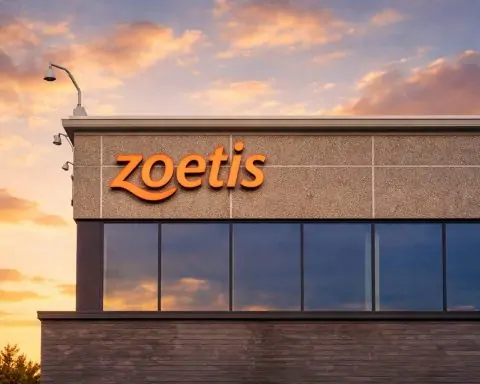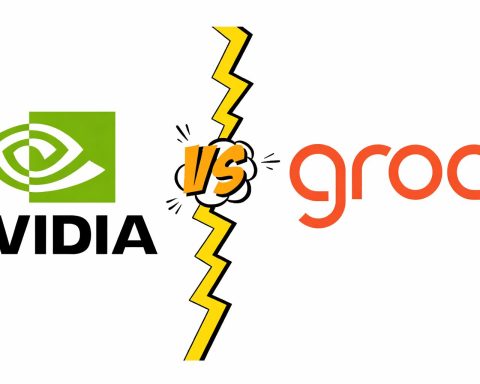Published: November 14, 2025
As a black‑and‑silver humanoid robot shuffled onto a Moscow stage to the Rocky theme this week, it was supposed to signal Russia’s arrival in the age of “embodied AI.”
Instead, the machine — a bipedal robot called AIDOL — raised its arm to wave, wobbled and crashed face‑first onto the floor as handlers rushed in and pulled a black curtain across the scene. [1]
Within hours, the video was everywhere: on X, TikTok, YouTube, and international broadcasts from CNN and the BBC, which replayed the stumble as shorthand for the gap between hype and reality in humanoid robotics. [2]
Today, November 14, 2025, that single fall has become more than a meme. It is being used to frame a much bigger story — a global race between Russia, Elon Musk’s Tesla and a state‑driven Chinese tech machine to turn humanoid robots from lab curiosities into trillion‑dollar infrastructure.
A slapstick debut that turned into a global story
The AIDOL incident took place earlier this week at a technology forum in Moscow organised by the New Technology Coalition, a consortium focused on humanoid robots. [3]
Different outlets date the event to November 10 or 11, but the sequence is consistent:
- AIDOL is escorted onstage by two staff members at a Moscow congress hall.
- The Rocky theme, “Gonna Fly Now,” booms through the speakers.
- The robot walks a few tentative steps, begins a wave — and suddenly pitches forward, slamming face‑first into the stage. [4]
- Pieces of the robot appear to scatter as staff rush in, drag it off and pull up a black screen to block cameras. [5]
News organisations from Newsweek to VNExpress, Indian outlets and tech sites in Europe and Asia ran the footage. [6] As of November 14, major follow‑up pieces in India, Vietnam and Europe are still landing, dissecting the clip frame by frame and asking what it means for Russia’s AI ambitions. [7]
The company behind the robot insists the mishap is being overblown. In comments cited across multiple outlets, AIDOL’s CEO Vladimir Vitukhin has blamed calibration issues and environmental factors like lighting and power fluctuations, casting the fall as part of a “learning” process rather than a catastrophic failure. [8]
On Thursday, Economic Times reported that the startup even shared a follow‑up video showing the robot in “recovery mode,” complete with a cartoonish bandage on its face, and assured followers that the machine is “in good hands” and will be back. [9]
Inside AIDOL: What Russia’s first AI humanoid is supposed to do
Behind the pratfall, AIDOL is an ambitious piece of hardware — at least on paper.
Public specifications and reporting from Russian and international media describe AIDOL as: [10]
- Around 1.85–1.86 metres tall (roughly 6 feet 1 inch)
- Weighing about 95 kg (around 209 pounds)
- Capable of walking at roughly 6 km/h (3.7 mph)
- Powered by a 48‑volt battery designed to keep it running autonomously for several hours
- Using 19 actuators/servomotors in its face to simulate more than a dozen basic emotions and numerous micro‑expressions
- Covered in a silicone “skin” intended to mimic human facial movement
Both the robot and the company share the same name, AIDOL — short for Artificial Intelligence Dynamic Organism Lab. The startup says that more than three‑quarters of the robot’s components are Russian‑made, with a goal of pushing that figure above 90 percent in future versions. [11]
Vitukhin has framed AIDOL as a general‑purpose humanoid designed to walk on two legs, manipulate objects and hold simple human‑like interactions — “three key human functions,” as one analysis of the project put it. TechStock²
In terms of scale, this is not a giant state conglomerate. Reports today emphasise that the company has around 14 employees, remains self‑funded and sees itself as a small but advanced player in Russia’s anthropomorphic robotics sector. [12]
A symbol of “technological sovereignty” under pressure
If AIDOL had stayed upright, Russian officials and state‑aligned media were poised to present it as proof that Moscow can still build cutting‑edge AI and robotics despite Western sanctions.
Since 2019, Russia’s national AI strategies have tied artificial intelligence and automation directly to national security and “technological sovereignty” — the ability to operate technologically without relying on Western hardware and cloud services. TechStock²
After the 2022 invasion of Ukraine, sanctions made access to advanced semiconductors, industrial controllers and robotics equipment significantly harder, accelerating a push for locally designed robots and electronics. Analysts note that Russia’s industrial robotics market has tilted toward Asian suppliers and domestically built solutions, even as quality and scale lag global leaders. TechStock²
Within that narrative, AIDOL was supposed to be a flagship:
- A mostly domestic machine
- Running its AI systems locally without foreign cloud infrastructure
- Promoted as evidence that Russia can still compete in high‑end embodied AI despite being cut off from many Western technologies [13]
Instead, the debut now risks becoming a metaphor for the stress of trying to meet political expectations in a technically demanding field — especially with a small team and limited resources.
Memes, mockery and a few words of sympathy
The fall’s optics were brutal — and the internet responded accordingly.
Social media users turned AIDOL into a punchline, with meme compilations comparing its unsteady gait to a drunk stumbling home and joking that the robot “runs on vodka,” echoing comments gathered by Indian and European outlets. [14]
Others fixated on the robot’s face, which some said resembled President Vladimir Putin, joking about “Putin’s robot double collapsing on the job.” TechStock²
Not all reactions were derisive. Roboticists quoted in coverage pointed out that falling is still common for early humanoid prototypes, even in well‑funded Western labs. They argued that the real misstep was staging such a high‑risk demo as a showpiece for national prestige rather than accepting that repeated failures are a standard part of training and tuning bipedal robots. [15]
Today’s follow‑up stories highlight both sides: the humour and the genuine acknowledgment that multi‑jointed humanoids balancing on two feet are among the hardest robots to engineer. [16]
Meanwhile in Texas: Elon Musk’s trillion‑dollar humanoid bet
While Russia was picking up pieces of a fallen prototype, Elon Musk was making his own humanoid robot the centre of a gigantic financial gamble.
On November 6, Tesla shareholders approved a performance‑based award that could be worth up to $1 trillion to Musk by around 2035, if the company hits a series of towering milestones. [17]
According to Newsweek’s Uncommon Knowledge column and Tesla’s own materials, those milestones include: [18]
- Pushing Tesla’s market value toward $8.5 trillion
- Shipping 20 million electric vehicles annually
- Deploying one million robotaxis
- And — crucially in this context — fielding one million “Optimus” humanoid robots
Musk’s pitch is explicit: concentrate unprecedented rewards in one founder to accelerate a transformation toward embodied AI — turning humanoid robots into a mass‑scale product line rather than a science‑fair novelty. [19]
In a separate Newsweek‑reported appearance, Musk argued that Tesla’s Optimus robot could even prevent future crime by following people around and physically stopping them from offending, framing that as a more “humane” alternative to prison. [20]
The idea has raised obvious ethical and practical questions:
- Would such robots become roving surveillance devices?
- Who decides what counts as crime in real time?
- How would a humanoid robot “intervene” without escalating violence? [21]
For now, Optimus remains in early testing. Tesla has released only limited footage of robots performing relatively simple tasks — sorting parts, folding clothes — and analysts caution that the autonomy Musk describes is still far from reality. [22]
China’s quiet lead in the humanoid robot race
If Russia’s AIDOL fall was slapstick and Musk’s shareholder drama was spectacle, China’s humanoid strategy has been, by contrast, methodical and state‑driven.
The same Newsweek analysis that highlighted AIDOL’s face‑plant sets out striking numbers from Chinese government tenders and industry research: [23]
- Chinese public procurement for humanoid robots and related technologies increased from around $700,000 in 2023 to roughly $30 million in 2024.
- Government subsidies flowing into the sector exceed $20 billion, according to compiled reports.
- Analysts counted 36 new Chinese humanoid models introduced in 2024, versus 8 in the United States.
- Consensus forecasts suggest around 1 million humanoid robots could be sold annually by 2030.
Some Chinese manufacturers are already advertising entry‑level humanoids priced in the low tens of thousands of dollars — roughly comparable to a used compact car — while companies like UBTech and Fourier Intelligence are piloting robots on auto production lines and shipping early batches to customers. [24]
Where Musk relies on a single hyper‑incentivised founder and Russia leans on the language of technological sovereignty, China is using classic industrial policy: subsidies, procurement, and an aggressive domestic supply‑chain build‑out aimed at making humanoids economically viable at scale.
In that context, the Russian robot’s fall is less about East‑West rivalry and more about a three‑way race where China may already have a structural lead in mass manufacturing, even if American firms lead in hype and brand recognition.
Why humanoid robots still fall — even in 2025
The technical explanation for AIDOL’s face‑plant is not unique to Russia.
Humanoid robots must constantly solve a difficult physics problem: keep a tall, heavy body balanced on a small support area (two feet) while joints move, surfaces change and sensors feed noisy data into control systems. Small errors in timing or perception can quickly push the robot’s centre of mass beyond a recoverable point, especially mid‑step or mid‑gesture. TechStock²+1
Even advanced systems that use modern reinforcement learning and learned “world models” typically start with low success rates on new tasks and only improve after many cycles of trial, error and adjustment. This is why test rigs often use tethers or safety harnesses — and why companies usually stage demos carefully. TechStock²+1
In recent years:
- Boston Dynamics robots have stumbled or fallen during parkour routines in behind‑the‑scenes footage.
- Early versions of Tesla’s humanoid appeared as a person in a robot suit before real prototypes were ready. [25]
AIDOL’s fall is embarrassing for Russian PR, but from a robotics standpoint, it’s part of a familiar pattern: ambitious teams showing prototypes on stage before the walking problem is fully solved for uncontrolled environments.
What today’s coverage on November 14 adds
As of November 14, 2025, new reporting around the world has added several layers to the story:
- Technical details & specs: Outlets in Asia have fleshed out AIDOL’s dimensions, battery system, component localisation and facial‑expression hardware, underscoring that this is a serious engineering project, not just a stunt. [26]
- Corporate backstory: Economic Times today highlighted that AIDOL is led from Dubai by Vladimir Vitukhin, who previously worked on federal IT projects for the Russian government, and that the startup has been active since 2023. [27]
- Public positioning: Newsweek’s updated coverage this morning emphasised that AIDOL is still in testing, that engineers are revisiting its balance systems and that the company wants the incident framed as a step in development, not a fatal blow. [28]
- Internet reaction: Fresh pieces in Indian and Vietnamese outlets today catalogue jokes, memes and more supportive comments, painting a richer picture of how the incident has been received outside Russia. [29]
- Global context: Opinion and analysis columns now explicitly link the AIDOL fall to Musk’s shareholder windfall and to China’s escalating humanoid procurement, arguing that the real story is a multi‑trillion‑dollar bet on embodied AI, not a single robot’s stumble. [30]
In other words, the narrative has shifted from “look at this funny fail video” to “this is a snapshot of where humanoid robots — and the politics around them — actually stand in late 2025.”
What AIDOL’s fall really tells us about AI in the real world
The viral video of AIDOL slamming into a stage in Moscow is undeniably comic. But it captures a broader tension in AI in 2025:
- In software, large models can generate images, code and text that feel almost magical.
- In hardware, getting a robot to simply walk across a stage without falling is still a major achievement. TechStock²+1
The incident exposes three key realities:
- Embodied AI is far behind disembodied AI
Chatbots and image models live in perfectly predictable digital worlds. Humanoids operate on slippery floors with bad lighting and unpredictable human behaviour. That gulf is where many of today’s failures — and tomorrow’s breakthroughs — will occur. - Politics and hype can outrun engineering
Whether it’s Russia promising a home‑grown robotics renaissance, Musk forecasting a world policed by Optimus robots, or China setting aggressive shipment targets, political and financial narratives often move faster than what engineers can reliably deliver. - The next decade will be defined by who can scale safely
The real race is not to produce a single impressive demo, but to build humanoids that can operate safely, economically and at scale in factories, warehouses, homes and public spaces. That will require not just clever AI, but also regulation, labour policy, safety standards and public trust.
For AIDOL’s creators, the crucial question is not whether their robot fell once, but whether they can iterate from this very public failure into a more stable Version 2 — and whether Russia’s wider tech ecosystem can support that work under sanctions.
For everyone else, AIDOL’s face‑plant is a reminder: the future of AI will be decided not just on screens and shareholder slides, but on real‑world stages, where gravity and friction still get the last word.
References
1. www.reuters.com, 2. www.facebook.com, 3. e.vnexpress.net, 4. www.reuters.com, 5. e.vnexpress.net, 6. www.newsweek.com, 7. www.hindustantimes.com, 8. www.hindustantimes.com, 9. m.economictimes.com, 10. www.hindustantimes.com, 11. www.hindustantimes.com, 12. www.hindustantimes.com, 13. www.newsweek.com, 14. timesofindia.indiatimes.com, 15. www.hindustantimes.com, 16. indianexpress.com, 17. www.newsweek.com, 18. www.newsweek.com, 19. www.newsweek.com, 20. www.newsweek.com, 21. www.newsweek.com, 22. www.newsweek.com, 23. www.newsweek.com, 24. www.newsweek.com, 25. indianexpress.com, 26. www.hindustantimes.com, 27. m.economictimes.com, 28. www.newsweek.com, 29. timesofindia.indiatimes.com, 30. www.newsweek.com










